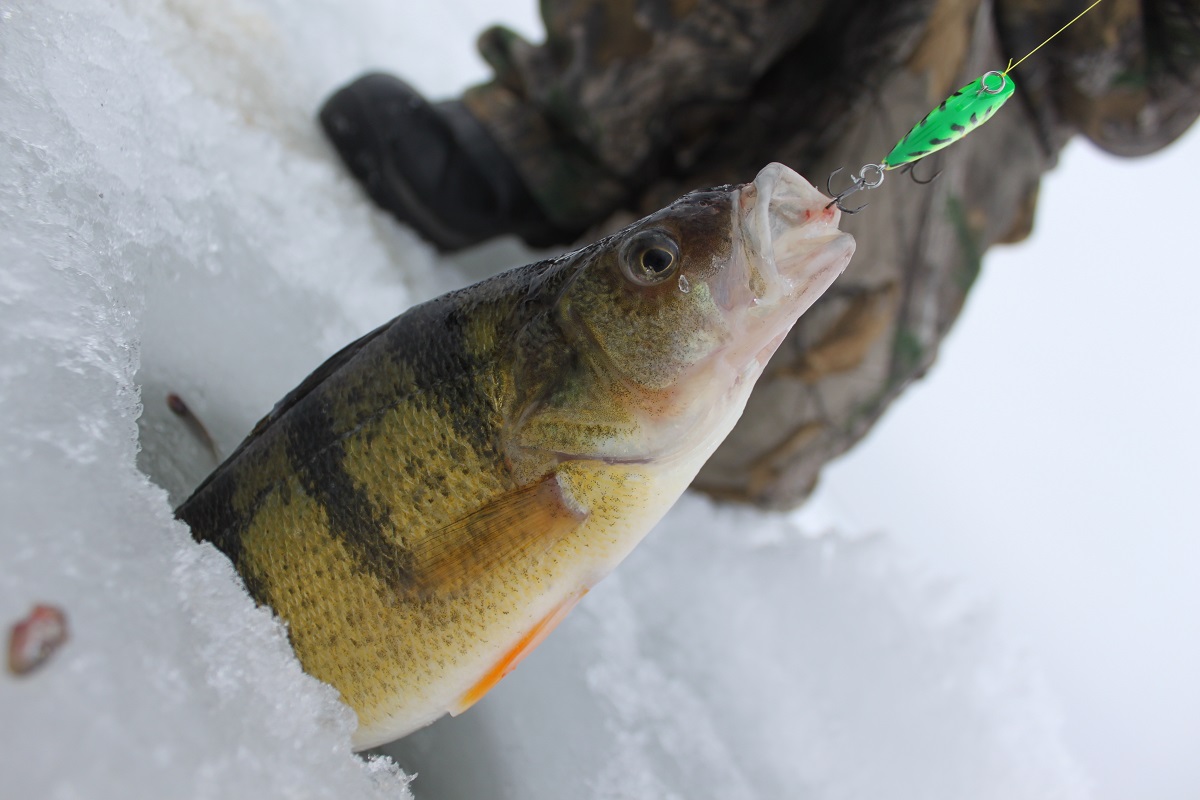While most think of ice fishing as a casual hobby, the truth is that it’s one of the most challenging ways to spend time outdoors. It contains so many ups and downs, and unlike most forms of fishing, it seems like you either have great days or terrible days.
“I don’t think there’s anything I triumph or fail at more than ice fishing,” I recently told my fishing buddy after staring at a motionless bobber for three hours. “It’s infuriating.”
One of the major parts of ice fishing that makes it such a make or break sport is the lack of mobility. Setting up and tearing down at a spot is often time consuming and made uncomfortable by winter conditions. To top it off, you’re battling the shortest days of the year while the water is hard, so moving locations or even lakes isn’t always practical.
The times when a spot does actually produce, is usually thanks to some great structure. Here are my three favorite things to look for when trying to pick the perfect location to drill some holes.

Vegetation
Once the leaves start to change in fall, so does the aquatic vegetation. How quickly weed beds die depends on the mildness of winter.
The further north you are, or the colder and snowier a winter is, the less likely that aquatic vegetation survives. The further south you are, or the less cold and less snowy a winter is, the more likely that aquatic vegetation survives.
Because weed beds can be rare in winter, they’re the perfect spot for fish to congregate. Fish enjoy them so much because they can easily dart around the thick cover and surprise unsuspecting prey. If you do setup here, you’ll want to use bait that is vibrant or has some sort of vibration so that fish can hone in on your lure.
Rock Piles
Fish stack up around boulders, rocks and gravely areas year-round, but they’re especially valuable for ice fisherman. One of the best benefits is often the improved water clarity that areas with rocky bottoms present. Since ice-fisherman are often limited to just a few holes and lines, having clear water where predators can spot your lure from great distances is favorable for anglers.
When you find a rocky area, it’s good to not only focus on the structure, but also the area around the structure. Fish will often transition into different spots throughout the day, so finding fringe locations where it turns from rocky to sandy or rocky to muddy could help you locate fish that you didn’t know were there.
Points
Depth changes are one of the best spots to find fish of prey, and points are one of the best spots to find depth changes. It’s almost a guarantee that if you see a point protruding from shore, that there will be some kind of major depth change around it.
Depth changes are especially attractive for those targeting fish that are most active in low light. Walleye and perch, for example, will stay deeper during the day and move shallow in the evening. Setting up on a point allows you to fish all sorts of depths and stick with the fish as they move from deep holes to shallow flats.
Be careful, though, as points are often the most likely places to have uneven ice. Always proceed with caution around areas that have major depth changes, and use contour maps to avoid spots that may contain unsafe ice.







